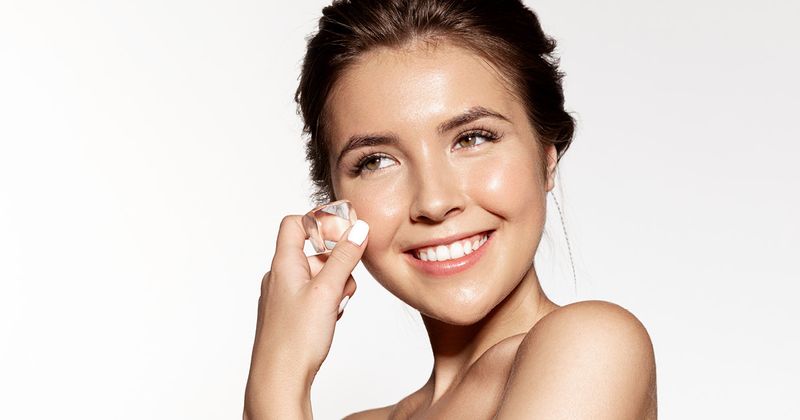Q&A: Face icing social media trend comes with upside, downside
TikTok and Instagram have been influential in spreading both new and old skin care trends, and it is one of those old ideas that recently made a resurgence.
Face icing, the process of applying ice or very cold water to the skin, is gaining traction among social media influencers.

Healio spoke to Konstantin Vasyukevich, MD, a facial plastic surgeon in New York City, to discuss how face icing can be beneficial to the skin and why so many individuals swear by the practice.

Healio: What is face icing and how does it work to benefit the skin?
Vasyukevich: Face icing is one of those skin treatments that becomes very popular every once in a while, then the popularity fades a bit, but it has a role in the overall armamentarium of things we use to keep people looking young and beautiful.
There are different effects, some are immediate, and some may be longer lasting. Most of the immediate effects are fairly positive.
When you put ice to your face, the blood vessels will constrict. Then when you remove the ice, the blood vessel will go in the opposite direction, dilating. This helps to give the skin more plumpness, increasing the elasticity of the skin, and gives it a little bit of a shine. It’s a youthful look people can appreciate immediately after they ice their face.
Long-term effects might be something that I would caution people about because any extreme temperatures applied to the skin for a long time may not be beneficial.
We know from life experience that for people whose skin is exposed to extreme temperatures or for people who work outdoors, oftentimes the skin loses elasticity and collagen, so it begins to age as opposed to looking younger and healthier.
Healio: What different methods of face icing are there?
Vasyukevich: There are multiple different regimens people use. Some people use ice directly, some use certain devices such as a stone put in the freezer and some dip their face in a bowl of very cold water.
Any form of application, as long as you are applying that cold temperature to the skin, would create this effect.
Healio: What kind of history does face icing have and how has social media affected its resurgence?
Vasyukevich: I’m sure it’s been going on forever. Just from personal experience, I know my grandmother would do it. But the recent trend was enhanced by social media and TikTok.
Just like all the other trends, social media can amplify them greatly.
Of course, good and bad comes with that, because if it works it will make people’s skin look healthier, and if it doesn’t, everyone will just give it up and abandon it very quickly.
Healio: Who should avoid face icing?
Vasyukevich: People with certain skin conditions this would be a contraindication. For example, someone with rosacea, I would not recommend icing because it can have the opposite effect and irritate the skin. For people with sensitive skin or some skin conditions, they could cool off the skin, but I would not recommend the extreme temperatures. Gentle cooling as opposed to freezing would work much better for them.
Healio: When should someone discuss face icing with their dermatologist?
Vasyukevich: It’s always good to ask a dermatologist, especially if you already work with one to get other cosmetic enhancements. Anyone with sensitive skin or any kind of skin condition should check with their dermatologist before starting to do it on a regular basis.
Healio: Do you have any closing thoughts to share with our audience?
Vasyukevich: Face icing is one of those things that is fairly safe. Unlike some other cosmetic procedures or treatments, there is a very low probability of someone developing a problem from it. And if a problem does develop, it’s generally temporary.
This is not a medical treatment. It is a remedy that can be helpful to some people, but it is not a solution to aging skin.
